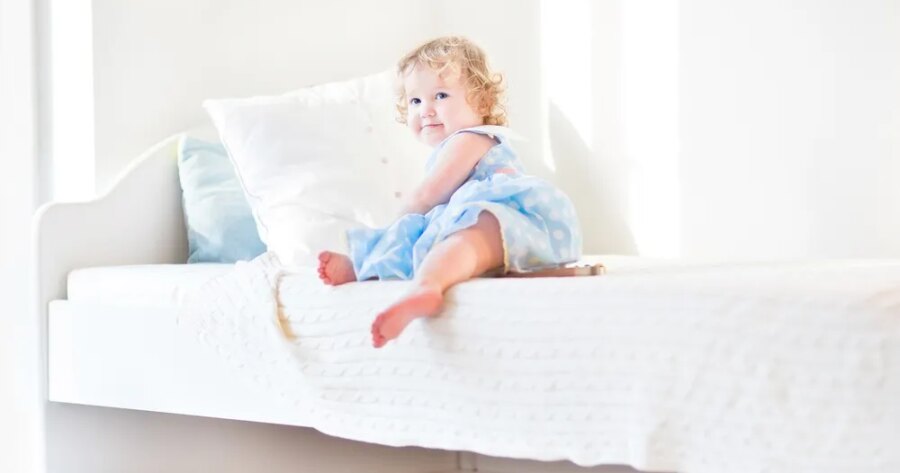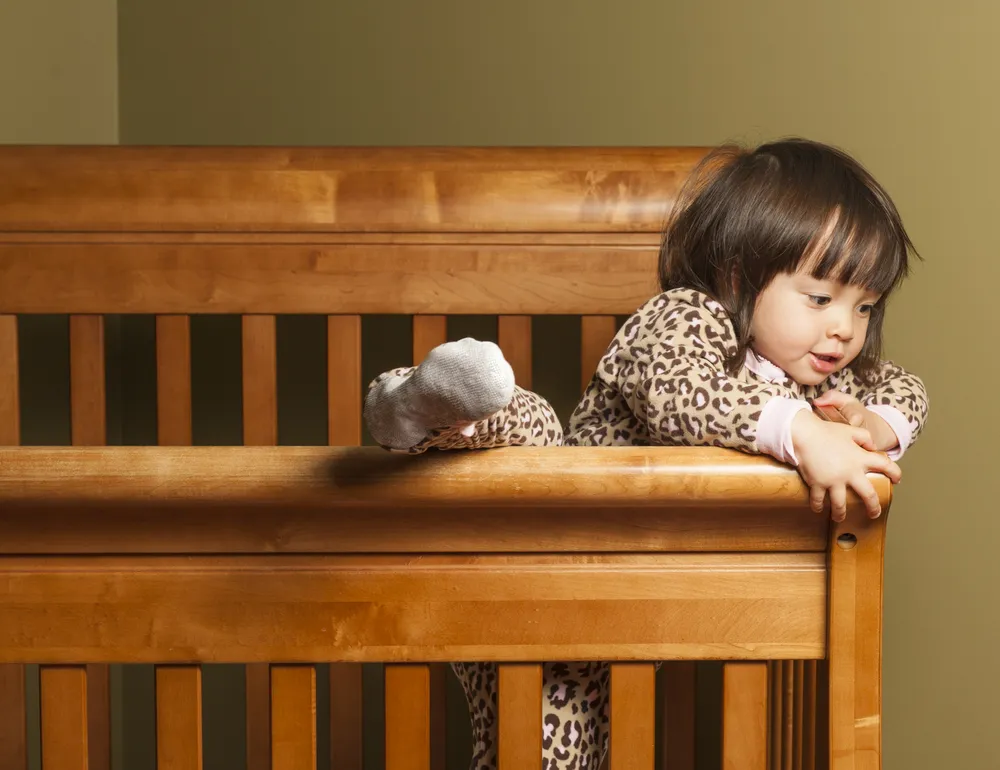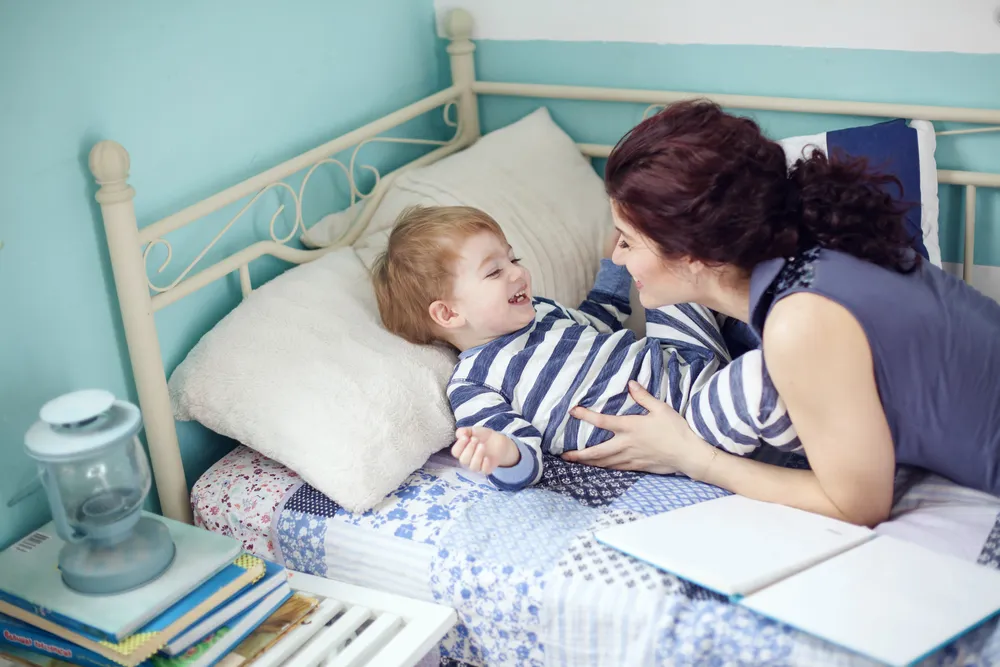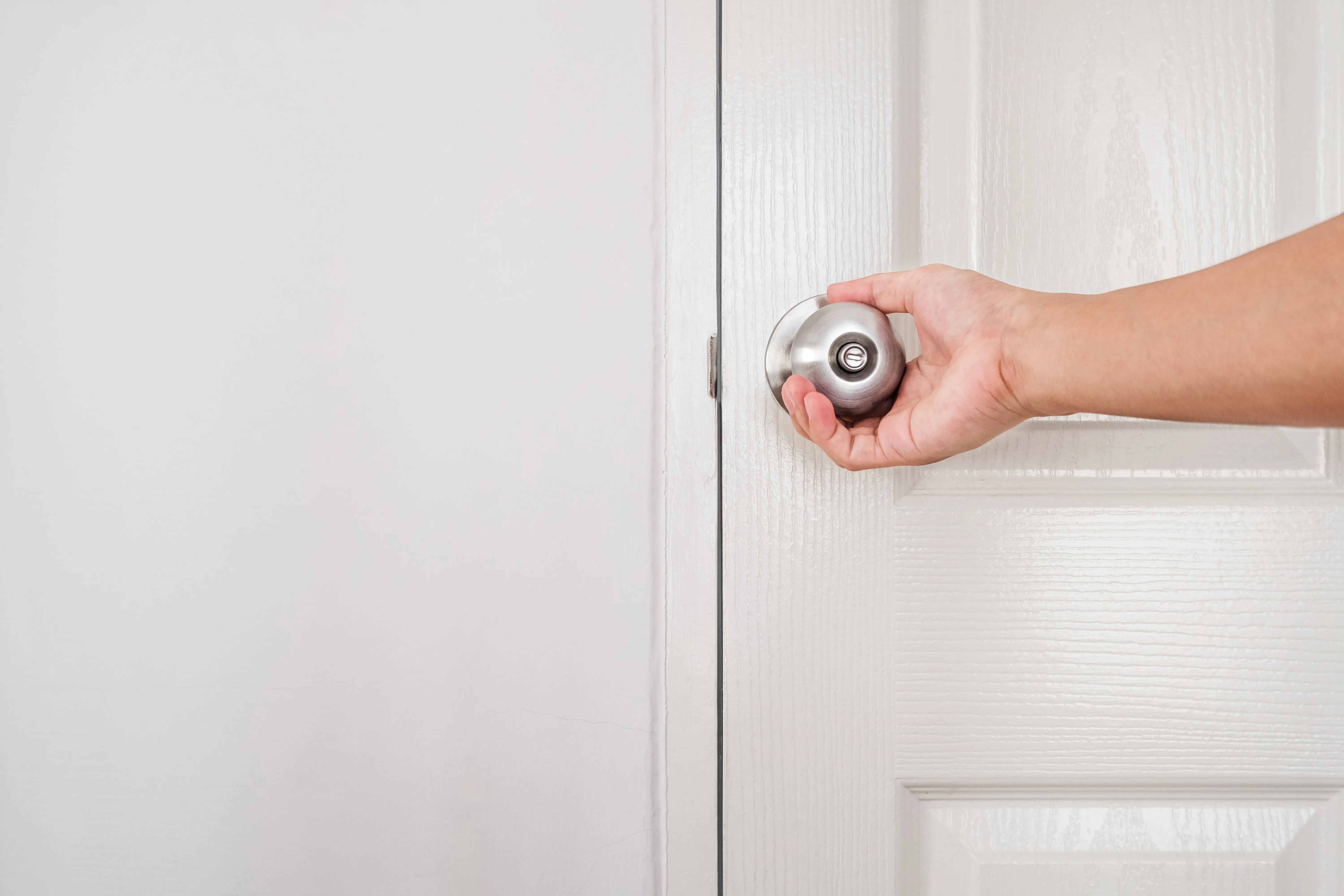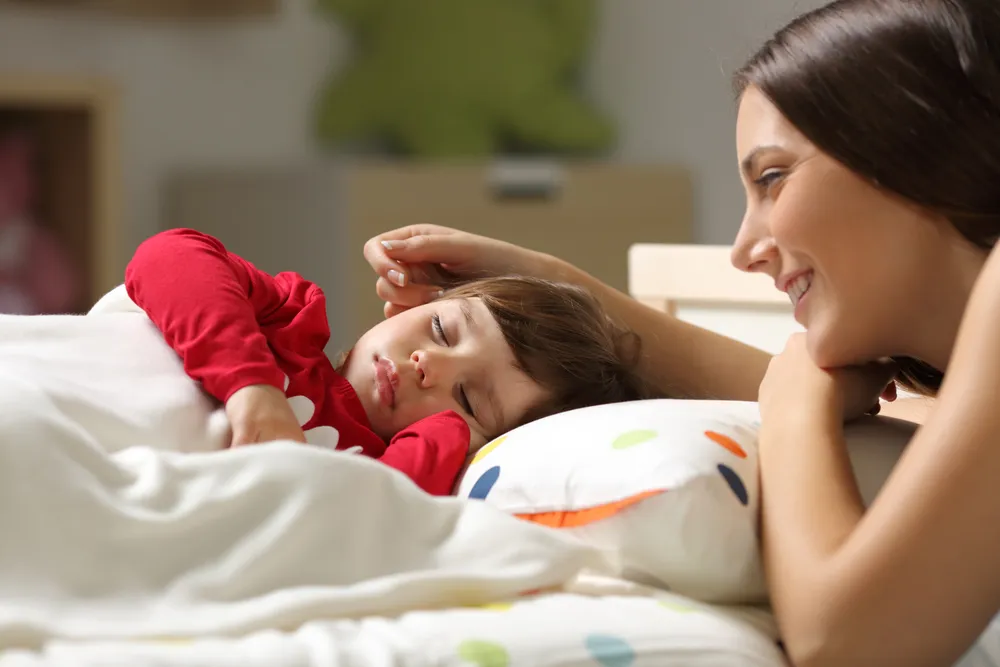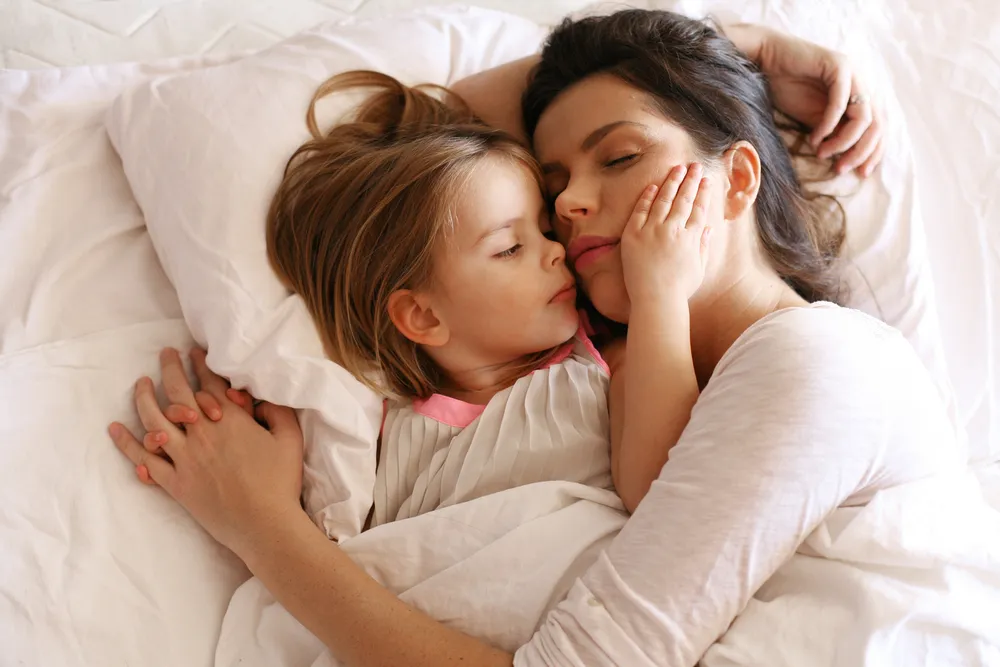There is something quite comforting (that I am sure many parents can agree with) knowing our child is safe and contained in their crib at night. For this reason, many parents are fine keeping their toddler in their crib for as long as possible. But someday, the day will come where we need to let our little one stretch out and go into their very own ‘big kid bed’. This time will vary for every family depending on their personal circumstances. Maybe you have a new child on the way and you are going to need the crib for the baby. Whatever the reason, eventually this day will come! There is no set time, although most children make the switch sometime between ages 1 1/2 and 3 1/2. It is often best to wait until your child is closer to 3 for a smoother transition. Here are some tips for transitioning your little one from crib to bed…
14. Is Your Toddler Showing Signs They Are Ready?
It is hard to know exactly when our little one is ready to transition from a crib to a bed, but there are a few tell-tale signs that you as a parent can look for:
- Your child is showing signs they will be okay unsupervised
- Your child is at the point where they can understand imaginary boundaries
- Your child is actually asking for a bed of their own
- Your child is climbing out of their crib
- Your child has literally outgrown their crib
- Your child is showing negativity (dis-like) towards their crib
- Your child is potty training and their crib is holding them back, literally
13. Consider the Type of Bed That is Best
Start looking at beds online or in department stores. Decide if you are looking for something for a few years, or something that will last them into their teenage years! Some people opt for a twin sized, double bed, or even a queen. This decision will depend on how much space you have and also price. If you do opt for a larger bed, you might want to consider something that is low to the ground, or something with bed rails that will prevent them from falling from a height.
12. Drop a Not-So-Subtle Hint Or Two
“Oh my, you are getting so big for this crib!” Dropping not so subtle hints may help plant the seed in your little ones head about getting a bigger bed. Having little chats like these can really help prepare you little one for the inevitable change and can also be used as a gauge to see how your little one feels about the idea. Maybe a little friend or cousin of theirs has a big bed….you could maybe plan a quick visit for them to see it. Just warming them up to the idea can help make the transition go a bit smoother.
11. Sell the Idea!
Get your little one excited for this change! Bring them on a family outing to the ‘big girl/boy bed’ store or let them look online and help pick their new bed. If you already have a big bed for transitioning them into, let them help pick the new bedding! When you first set the bed up at home, don’t pressure your child to sleep there just yet. Have your little one put their teddy bear to sleep in the bed, and maybe even read stories in it. Get them excited, and hopefully they will be asking to sleep in it!
10. Bedroom Makeover
The new and bigger bed may mean that a new floor plan completely is needed. Start plotting things out, and maybe use this opportunity to remodel their bedroom and ditch the baby decor for something a bit more big-kid appropriate. Maybe they are a big Paw Patrol fan, or loves all things Disney — find some wall decals or other decor items and create a new themed decor for your little ones room that they can be really excited about!
9. Keep Their Room A Calm Sanctuary
Something that is very important to keep in mind is that their bedroom is for sleep, not for play! Keep the room calm by eliminating any potential obstacles to sleep in their bedroom. Now that your child will be able to hop out of bed, you don’t want them to be tempted to play instead of sleep. Their bedroom should be a sanctuary, not a playroom — so keep the environment serene where they are able to relax and get into sleep mode!
8. Re- Evaluate Your Toddler Proof Home
No more baby jail. Once those crib bars are down, you might want to re-evaluate how toddler-proof your home really is. Ensure that you have safety gates on stairwells, and some parents opt to keep a safety gate right at their child’s bedroom door. Consider all of the potential safety hazards that they may come across during times where you may be sleeping, but they are up sneaking around. Keep blind cords secured, heavy objects down low, electrical outlets plugged, furniture and bookcases secured safely to the walls, — to name just a few. So much to consider when it comes to keeping your little one safe during those moments of low supervision.
7. Introduce Bed In Stages
When you have their big kid bed set up, start easing them into it. Try having them start by using the bed for naps. Some children may put up more resistance than others, and the cold turkey approach from the crib, might be a bit hard for them. An alternative idea is you can use this new space as a reading nook for some bedtime books. Getting them comfortable while starting to include the new bed in the old bedtime routine, can help make the transition a bit more smooth.
6. Be Laid Back! Don’t Be Anxious
Our little ones can really read us like a book sometimes. If we are anxious and stressed out about them transitioning from crib to bed, they will sense it. We might be setting the stage for the way the whole transition might go. Instead, try to keep chill and relaxed — as if it is no big deal, and be confident in their ability to transition to their big-kid bed in big-kid fashion!
5. Continue Your Usual Bedtime Routine for a Little While
Try to keep things as consistent as possible. Try to keep calm and not make a big deal of the whole transition, and rather, keep doing your normal night time routine, as usual. Keeping things as consistent as possible and continue doing what they are already comfortable with, will make things a lot easier on both you and your child. Too much change at once can be very hard on a little one, so just keep it to one little change a time!
4. Cuddle To Sleep With Your Child
If you sense your child is struggling with the transition to the new bed and experiencing some nighttime separation anxiety, you might offer to cuddle them for a few nights until they fall asleep. You might not want to promise them that you will always do this, instead offer them perhaps a week of cuddles as they adjust and that then they should be ready to get to sleep on their own. Just like weaning from the breast, this weaning of your physical presence will also be a gradual process. How long it will take will depend upon your child’s sensitivity to separation.
3. Leave and Come Back
If your child doesn’t seem to want to let you leave their room, try telling them you have to go get something, or flip the laundry, or some other excuse for you to leave the room. Step out of their room for 30 seconds or so, then come right back in and sit down beside them for a little while. Over the course of the next few weeks, gradually lengthen the time you step out of the room. If your little one grows anxious when you leave the room, try leaving the door open, and sing a song while you are gone so that they can still hear you. Eventually you will be out of their room more than you are in it, and they will eventually fall asleep without requiring your presence.
2. Try the “Fade Away” Strategy With Your Child
Once your little one is comfortable with going to sleep in their new bed with you there with them, you can work on helping them go to sleep without you having to be there. This “fade away” strategy can be done as quickly or as slowly as you deem right. As your child gets older, they will show signs they are ready for this additional transition in their nighttime schedule. Again, keep things consistent for the first while, and don’t make too many changes at once or they might not react to the change very well.
1. Be Ready for Some Potential Ups and Downs
It never hurts to be prepared. Like any major milestone, it may come with regressions. Be patient, and expect nights where your child might wake up and want their mommy or daddy by their side. Just when you think they have it figured out and are sleeping through the night, they might have another set back. Keep calm, and have the confidence and faith that they will soon get it, and you can all get some shut-eye in your comfy big beds!
